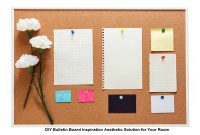Repurposed furniture is the concept of reusing old or used furniture into new pieces with different functions. This trend is gaining popularity with the growing awareness of the importance of sustainability in everyday life. In addition to helping reduce waste, this furniture also offers a unique and personal aesthetic. Each piece has a character that cannot be found in new, mass-produced furniture.

Repurposed Furniture Designs
Repurposed furniture designs typically utilize old furniture such as wooden tables, chairs, cupboards, or even used doors to create new products. Simple examples include turning a used wooden ladder into a bookshelf, or transforming a wooden crate into a coffee table with a touch of natural paint. The uniqueness of these designs lies in the combination of creativity and the limited availability of materials, resulting in authentic pieces.
Furthermore, the use of natural materials such as recycled wood lends a warm feel to the room. The resulting designs are also flexible, adaptable to minimalist, rustic, and modern home concepts. This makes this furniture not only environmentally friendly but also able to add high artistic value to a living space.
Benefits of Repurposed Furniture
Repurposed furniture offers significant benefits in various aspects of life. From an environmental perspective, reusing old materials can reduce the amount of waste that ends up in landfills. Economically, the production costs of this concept for furniture are relatively lower because the raw materials are readily available.
Furthermore, its aesthetic value is also a major draw. The resulting furniture often has a unique appearance because the traces of previous use leave traces of character. This creates a distinct impression compared to new, manufactured furniture, which tends to be uniform.
Environmentally Friendly Materials
The main materials used in repurposed furniture are usually recycled wood, scrap metal, or old textiles. Utilizing these materials helps reduce the exploitation of new natural resources. Wood from pallets or construction scraps is often used as the base material because it retains its strength and quality.
In addition to wood, the use of recycled iron or steel is also popular in creating industrial-style furniture. Even used fabric or synthetic leather from old products can be used to upholster new chairs or sofas. This combination of materials enriches design variations and ensures longer durability.
Trends in the Interior Industry
Repurposed furniture is increasingly popular in the modern interior industry. Many designers choose recycled furniture to showcase both an environmentally friendly concept and a unique aesthetic. Restaurants, cafes, and hotels are also starting to utilize this type of furniture to create a distinct impression while strengthening their sustainable image.
Demand for repurposes is growing rapidly in the international market. This proves that sustainability is not just a trend, but a necessity in modern lifestyles. With more local craftsmen developing this concept, the domestic market has the potential to grow even further.
Repurposed Furniture vs Mass-Produced Furniture
Repurposed furniture offers unique designs, eco-friendly materials, and artistic value not found in mass-produced furniture. Each product has its own distinct character because it’s made from recycled materials. In contrast, mass-produced furniture has the advantage of availability and is often more affordable, but tends to be uniform and has a greater environmental impact due to the need for new materials. In terms of durability, repurposed furniture is often stronger because it utilizes quality old materials, while mass-produced furniture wears out more quickly. The best choice depends on your priorities: sustainability or practicality.
According to a video on Instagram by paintmomzy, a user shared her experience of almost throwing away an old mirror, but ultimately opting to make it part of a Repurposed Furniture project. Instead of being considered “trash,” the mirror was transformed into a new piece with a simple touch of paint and creativity. This experience demonstrates that old furniture doesn’t always lose its value; instead, it can become a unique medium for artistic expression. The user also emphasized that every imperfection in the repurposed material adds character and beauty to the final product, serving as concrete evidence that sustainability can go hand in hand with aesthetics.
Repurposed furniture is not just a passing trend, but rather part of a sustainable lifestyle that brings significant benefits to the environment, the economy, and aesthetics. With creative designs, eco-friendly materials, and high artistic value, recycled furniture is a perfect solution for modern home decor. The application of this concept demonstrates that sustainability can go hand in hand with beauty and functionality, making a home more vibrant and environmentally friendly. /tari



